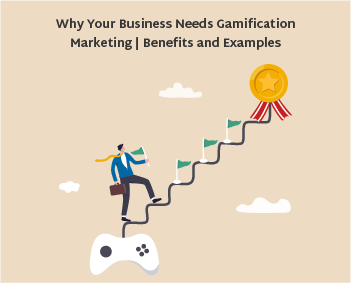The effectiveness of gamification as a marketing strategy is well-established. Brands that use gamification in their consumer engagement will reap the benefits of the human desire to play games. You might not know where to begin or which gamification strategy is most suited for your brand but don’t worry; this is why we’re here.
Gamification applies gaming concepts in non-gaming frameworks; it has gained popularity in recent years. For example, students could earn badges or achievements for completing activities, much as they would in a gaming environment.
Since at least the early 2000s, there has been talk about gamification as a concept. In 2010, it became familiar, but marketing companies have just recently begun to use it. Preliminary surveys on gamification have revealed excellent results despite the lack of formal studies worldwide.
Motivate customers to engage with your campaign
Instinctively, we all want to play games. As a result of gamification, information may be made more exciting, coworkers can compete against one other, and consumers can feel proud of their accomplishments when they complete tasks and challenges in games. Consumers who are cognitively active and who experience genuine emotions due to the outcome of a product-based game are more likely to remember what they’ve bought. Passive scrolling, clicking next, and listening to long product descriptions aren’t the most fulfilling ways to spend a consumer’s time. The more engaged and productive they are at shopping, the better ROI you get.
Badges, Ranks, and Points are key motivators
Badges are the vital component in gamified content that can be as basic as virtual flags, labels, or trophies that customers are awarded for completing tasks or unlocking new stages within the game. For example, these badges can be displayed in the game itself and on intranets and social networking sites like Facebook, etc. As Medium puts it, “Badges make the user feel important and capable.” Buyers and sellers both benefit from badges since they are a tangible representation of their achievements.
Increase customer engagement and retention
Your brand’s gamified aspects encourage players to respond to your call-to-action (CTA) more than a typical banner ad or any other marketing strategy, increasing their chances of winning the prizes you’ve linked to the interactive experience. Improved conversion rates can be achieved through this. Give your website visitors a 10% discount if they complete a short, interactive quiz. The user is likely to use that discount to buy something from your store or e-commerce site.
How Can We Apply Gamification to Real-World Problems?
Interactive Videos
Interactive videos encourage viewers to perform actions to reveal results. This keeps them engaged with the video content, thus increasing the chances of converting them into a customer. The user is asked to swiftly tap or swipe across the screen before the timer expires. Interactive videos are perfect for presenting the viewer with multiple choice questions and seeing how they perceive the information in your video.
There are also interactive videos that allow users to choose the product they want to buy. During the video, the viewer is given a decision that affects the actual narrative.
Gamified AR Filters
Gamified AR filters are an awesome way to increase customer engagement and stand head and shoulders above your competition for advertising campaigns. Gamified filters can also be used as a central focus point of content for influencer marketing, as the influencer can play the filter and share it with their followers.
Gamified Q & A responses
Positive or negative feedback is the most important aspect of a game. A person’s mental health can be improved by playing various games. Students are more expected to complete the game successfully if they can track their progress and receive instant feedback on their gameplay. This feedback can even be tied to the game’s final outcome!
For example, in a marketing setting, players can be required to complete a series of questions before accessing more difficult ones. The user is promptly informed if they fail in a task. As a result, they’ll be more motivated to buy the product and provide perfect feedback on the following game.
Improve Employee Engagement
Employees become more engaged with their surroundings when they play games. When employees are trained through gamified tactics, they become more devoted to the company, and their sense of belonging to a team grows. Game-based learning makes it easier for employees to feel more connected to the company’s mission and goals.
Conclusion
Gamification has the potential to increase user participation in both business and marketing. However, you must have a good idea and select the greatest rewards and achievements. Gamification plugins like myCred rewards you when your user wins. For your firm and employees, gamification can provide a lot more. But remember, don’t go overboard, or you’ll lose sight of your company’s primary goal. Boosting sales can positively impact your organization, but you must plan earlier to avoid unforeseen circumstances.






